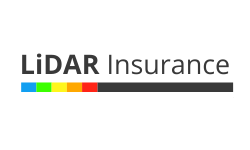How are drones and sensors being used in the Engineering and Construction sectors?
The engineering and construction industries are based on the human relationships between many project stakeholders to deliver data, project goals, and accuracy.
Drones (also known as unmanned aircraft’s, ie UAV’s) have presented new solutions to reduce costs, mitigate risk, and improve quality.
UAV’s come in a variety of shapes, sizes, and weights, depending on the scope of work, weight of payload, and other factors.
In general, there are three key types of UAV’s.
FIXED WING: Long Range, endurance aircraft. Controlled by a remote and relies on human operaton. Payload is typically a high resolution camera that collects thermal or multi spectral images.
ROTARY WING: Easy take-off, precise control. Controlled by computers or humans and usually have a predefined path. Payload are typically sensors that collect light sensitivity (LiDAR, pressure, sound, and gas vapors.
HYBRID: Combination of both: Payload is typically en emitting system that collects light, sound, and other radiations.
Each come with their own set of regulations and operating parameters, so it’s important your pilots are trained and have the appropriate FAA waivers.
So how are engineering and construction businesses using drones today?
AERIAL MONITORING: Drones are able to monitor structures like power lines and railroads to check for vegetation growth and to detect damaged areas and rust formation.
STOCKPILE MONITORING: With sensors attached to the UAV they are able to measure extraction areas and stockpile volumes, height, diameter and density to monitor inventory, prevent theft and to plan deliveries and collections.
3D MAPPING: Calculated flight plans allow drones to produce detailed maps to support planning and designing new worksites and evaluate distances between installations.
GAS EMISSION MONITORING: The use of thermal imaging has helped gas companies to identify and pinpoint has leaks on towers or platforms, avoiding potentially very dangerous exposure for workers and the extremely costly suspension of activity.
PYLONS MANAGEMENT: Drones using thermal and UV cameras are able to inspect electrical equipment to detect failures and overdue maintenance.
The industry is growing very fast and developing as the technology evolves. The costs associated with drones, equipment, and insurance can be very expensive. It’s important you have an insurance partner that understands your business and the risk involved.
Speak to an agent today about your operation.
Email: tyler@lidarinsurance.com
Phone: 213.792.2846
